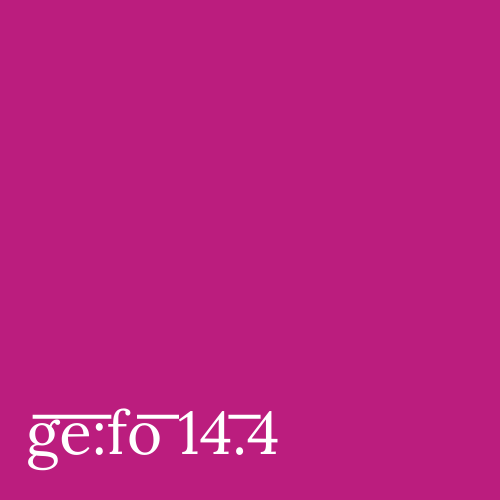The Queer Temporality of Gertrude Stein’s Continuous Present
DOI:
https://doi.org/10.18716/ojs/gefo/2015.2674Keywords:
Modernism, Gertrude Stein, T.S. Elliot, Tender Buttons, Lifting Belly, Composition as Explanation, Portraits and Repetition, temporalitiesAbstract
As writers who embraced the Modernist maxim to “Make it New,” one might think that Gertrude Stein, T.S. Eliot, and Ezra Pound would want nothing to do with repetition. As critics Louis Menand and Michael North have shown, however, Pound’s now iconic phrase was, ironically, anything but new. North convincingly shows that Pound, an avid reader of Chinese literature, borrowed the phrase from an anecdote about the first king of the Shang dynasty (1766–1753 BC) (n.p). Similarly, Menand draws our attention to the fact that “the ‘It’ in ‘Make It New’ is the Old—what is valuable in the culture of the past,” a past that plays a central role in most of Pound’s writing (n.p.). This complex relationship between the new and the old, the past, the present, and the future – rather than simply ‘the new’ – is what most contemporary critics see as the defining characteristic of Modernist American literature. Stein’s work, like that of other Modernists, exhibits a powerful desire to innovate and to break with tradition. This essay argues, however, that Stein chose to do this not simply by exploiting or inventing ‘new’ poetic forms but by attempting to endow repetition, ordinariness, and habit with a certain disruptiveness.
Through a close reading of two of her most experimental texts, Tender Buttons (1913) and “Lifting Belly” (1915), and two of her best-known lectures, “Composition as Explanation” (1926) and “Portraits and Repetition” (1935), I attempt to show how Stein’s reliance on techniques such as beginning again and again and using everything locate her compositions in a continuous present that eschews linear views of temporality predicated on a progression from past to present to future. Drawing on queer temporality theory, I further contend that Stein’s commitment to re-imagining repetition as insistence (a repetition that does not repeat) in her compositions constitutes a decidedly queer endeavor. The recursiveness of her poetry, I argue, forces the reader to inhabit a queer time that opposes the regulatory, ‘straight’ temporality of chrononormativity in favor of an ‘other’ time. This ‘other’ time, in turn, defamiliarizes us with traditional modes of signification and closure, asking us to question not only the naturalization of hegemonic temporalities but also the fixity of ontological categories.



